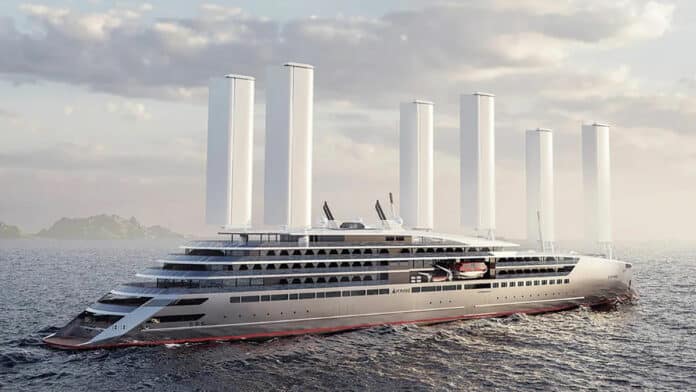Wind power, electricity, and green hydrogen are being combined to create innovative maritime projects that reduce emissions and promote cleaner alternatives for transportation.
One of the main challenges of creating futuristic vessels that run on hydrogen is ensuring a steady, affordable supply. Now, a Nantes-based startup has developed a unique solution that has the potential to transform not only maritime applications but also the way that islands and coastal communities get their power supply.
Farwind Energy has created an energy ship equipped with rotor sails that generate electricity through water turbines and convert it into hydrogen through electrolysis while at sea. This hydrogen can be delivered to island territories or used to refuel ships at sea. The concept is complex, but it has multiple potential benefits, especially in maritime transportation.
The main advantage is that it can supply green hydrogen near a ship’s area of operation, which is crucial when there are no available means of producing and supplying this type of fuel. This solution is clean, harnessing the power of offshore wind energy and seawater to make renewable hydrogen readily available for zero-emission ships.
The Farwind Energy concept can be complementary to the Swap2Zero cruise concept developed by Ponant. The Cruise vessel will utilize six different green technologies, including an efficient hull design, a state-of-the-art sailing system, and more than 1,000 square meters of photovoltaic panels to capture solar power. Additionally, two fuel cell technology systems will be used onboard – one for the propulsion, based on liquid hydrogen, and the other for the hotel load using high-temperature fuel cells.
The two processes have their own unique applications for the heat and water they generate. Additionally, the Swap2Zero vessel will have a carbon-capture system that is connected to high-temperature fuel cells. This 181-meter long cruise ship will have 100 staterooms and can operate for a month without any emissions, including CO2, N2O, and methane. This ship is also expected to serve as a model for other types of ships, showcasing technologies that can be adapted for various purposes.
PONANT is collaborating with FARWIND Energy to bring these two game-changing concepts together. The plan is to share progress on the management of hydrogen on board and collaborate on the development of first use cases and overcoming potential technological obstacles. The two partners have set themselves a goal to be in a position to commission PONANT’s Swap2Zero project and the first energy ship at the same time by 2030.
